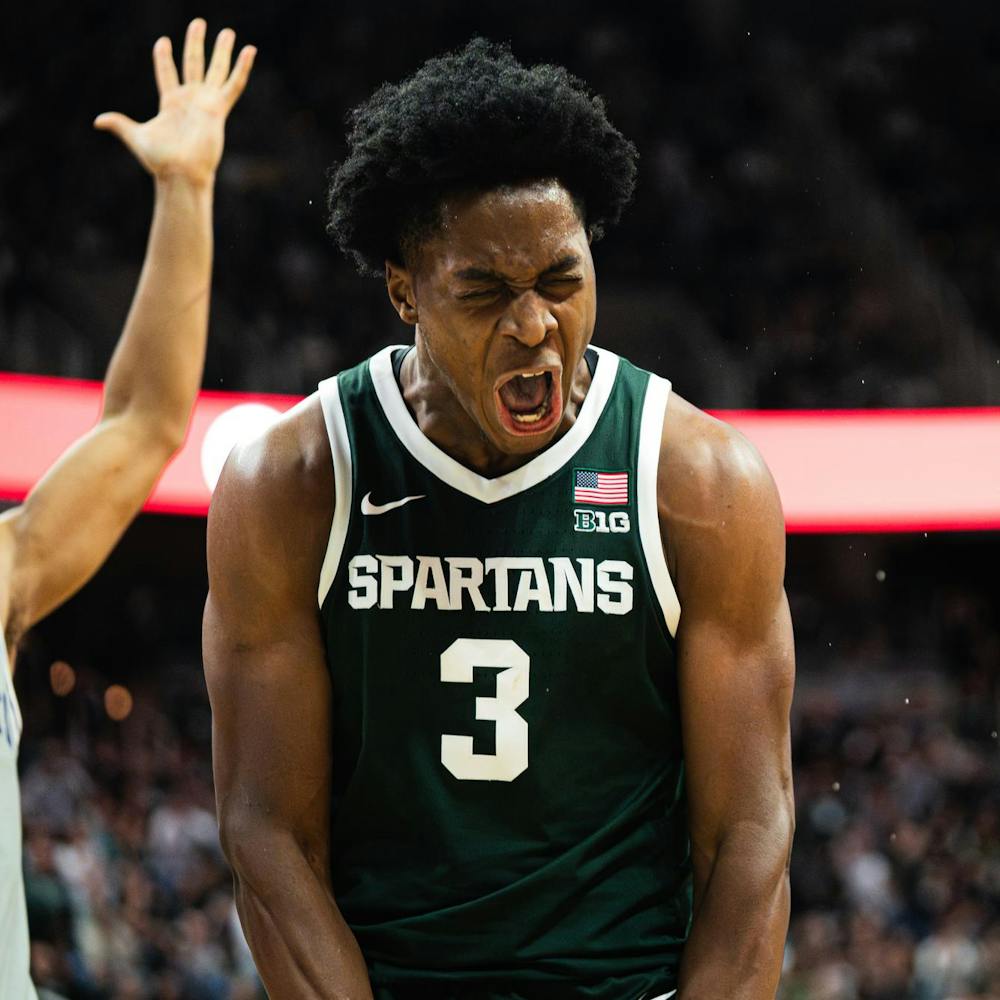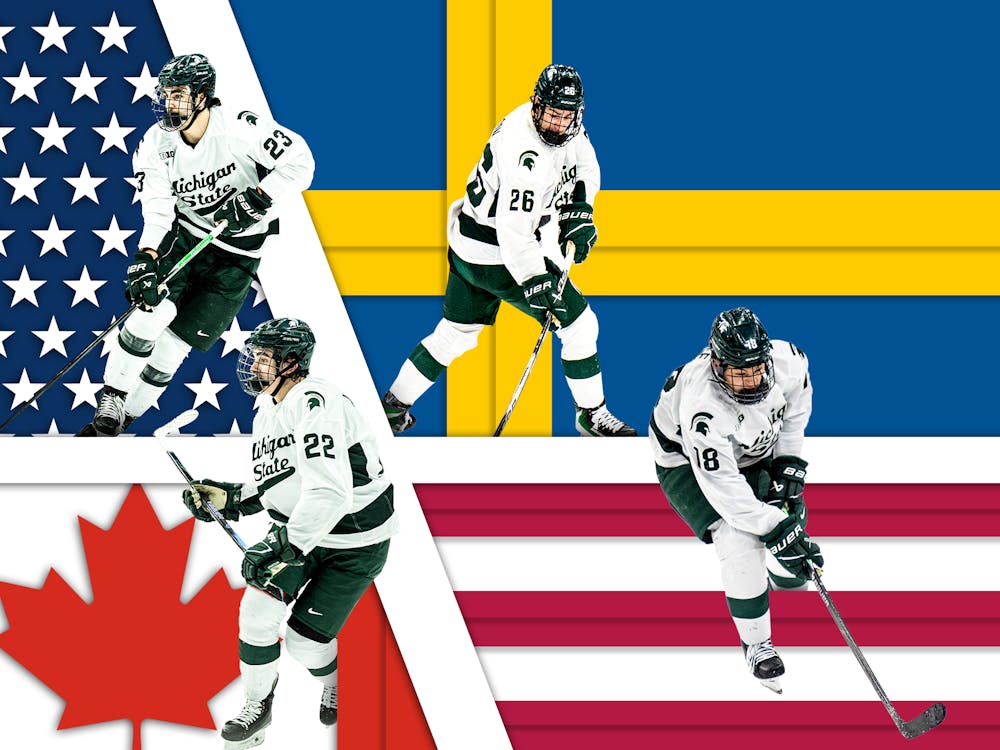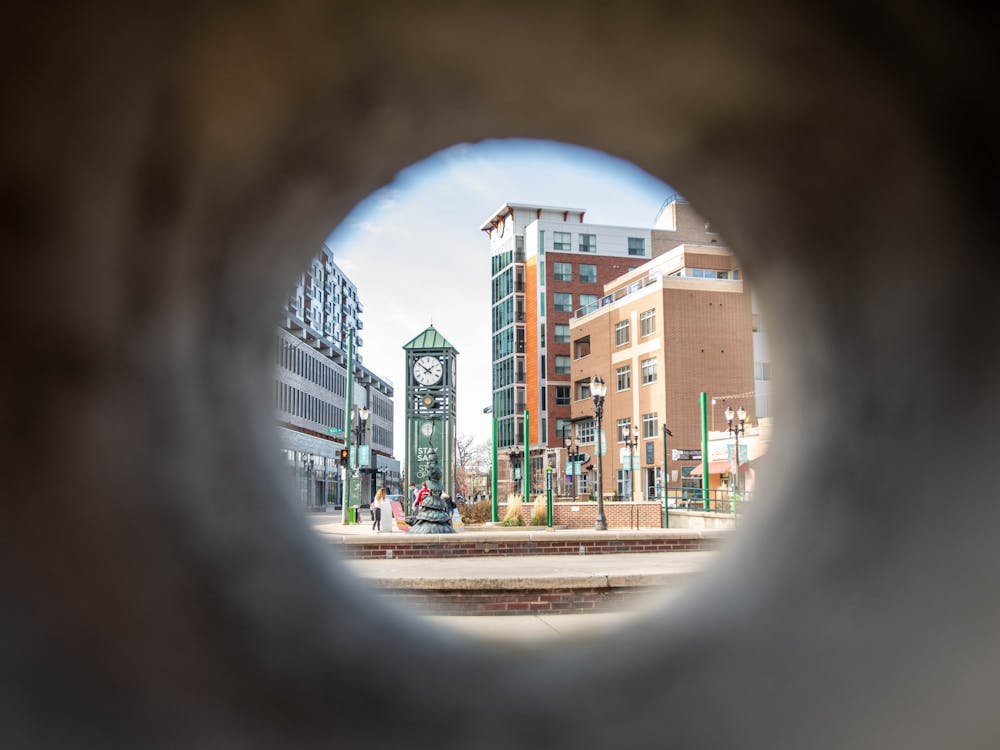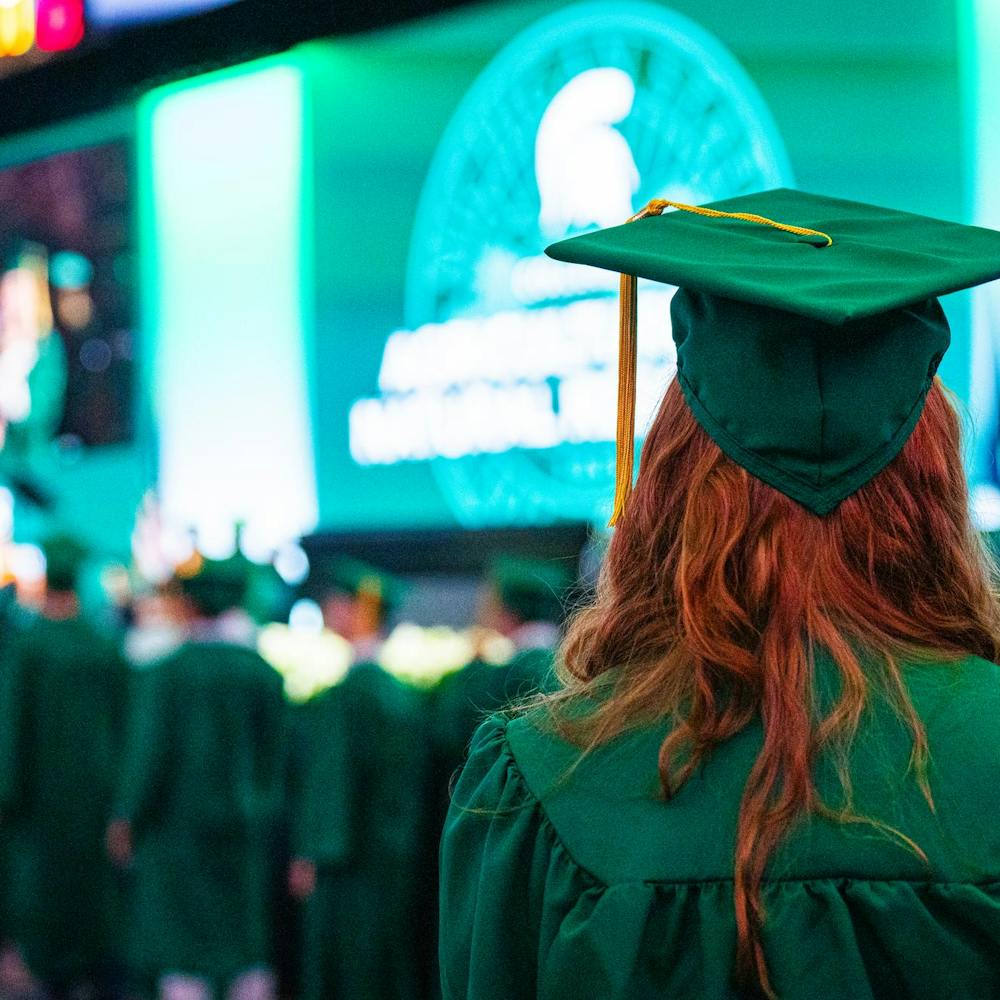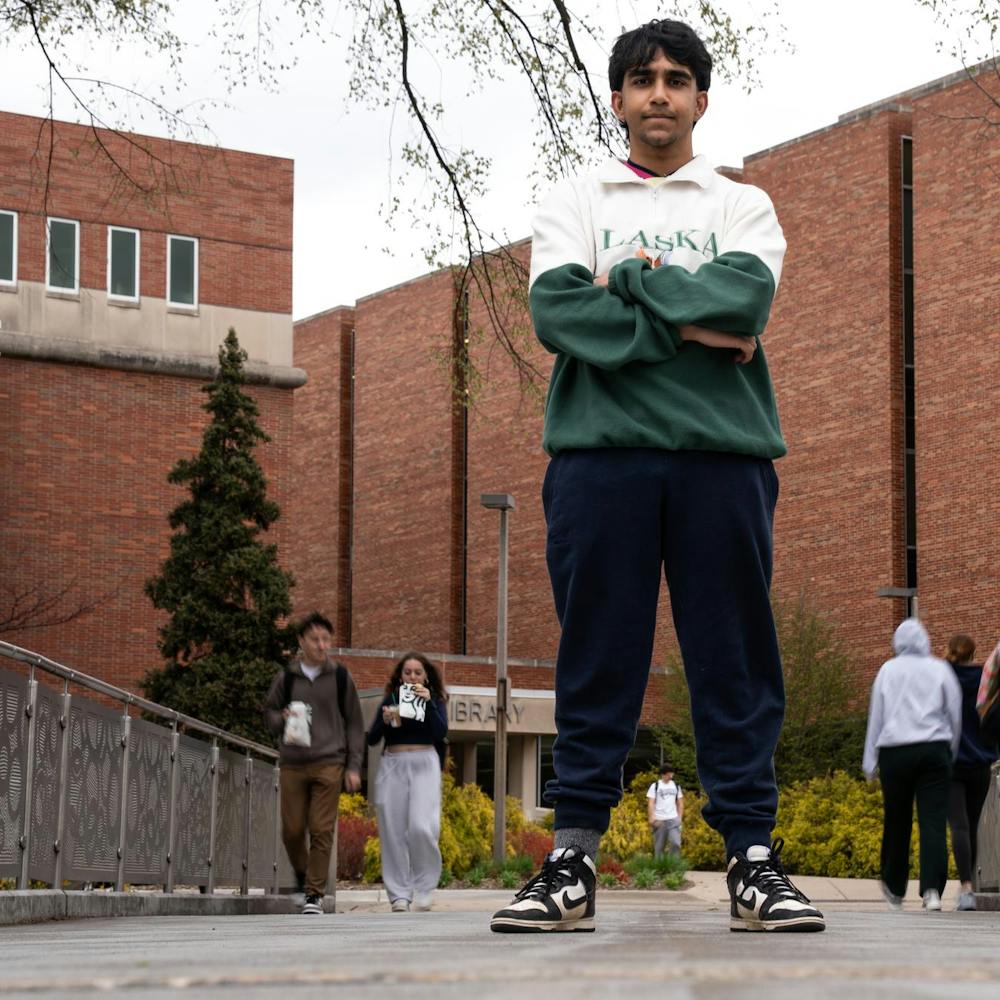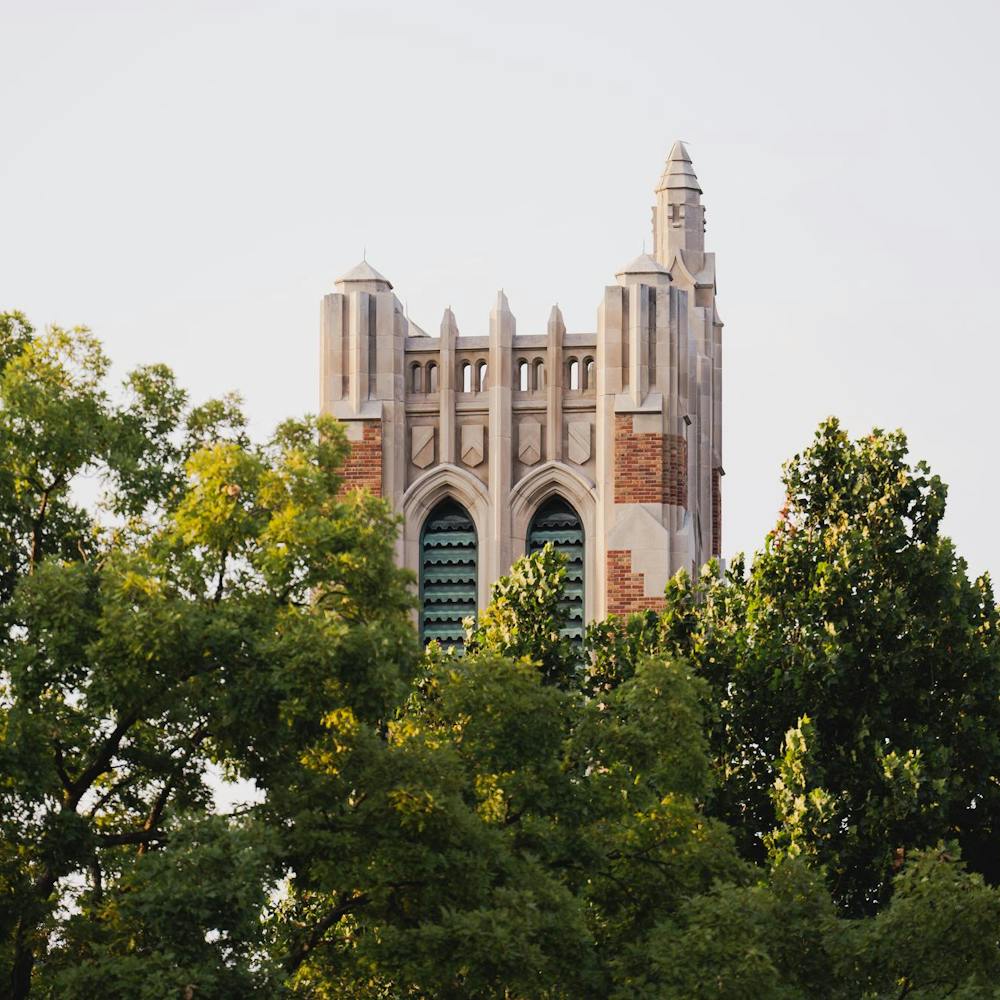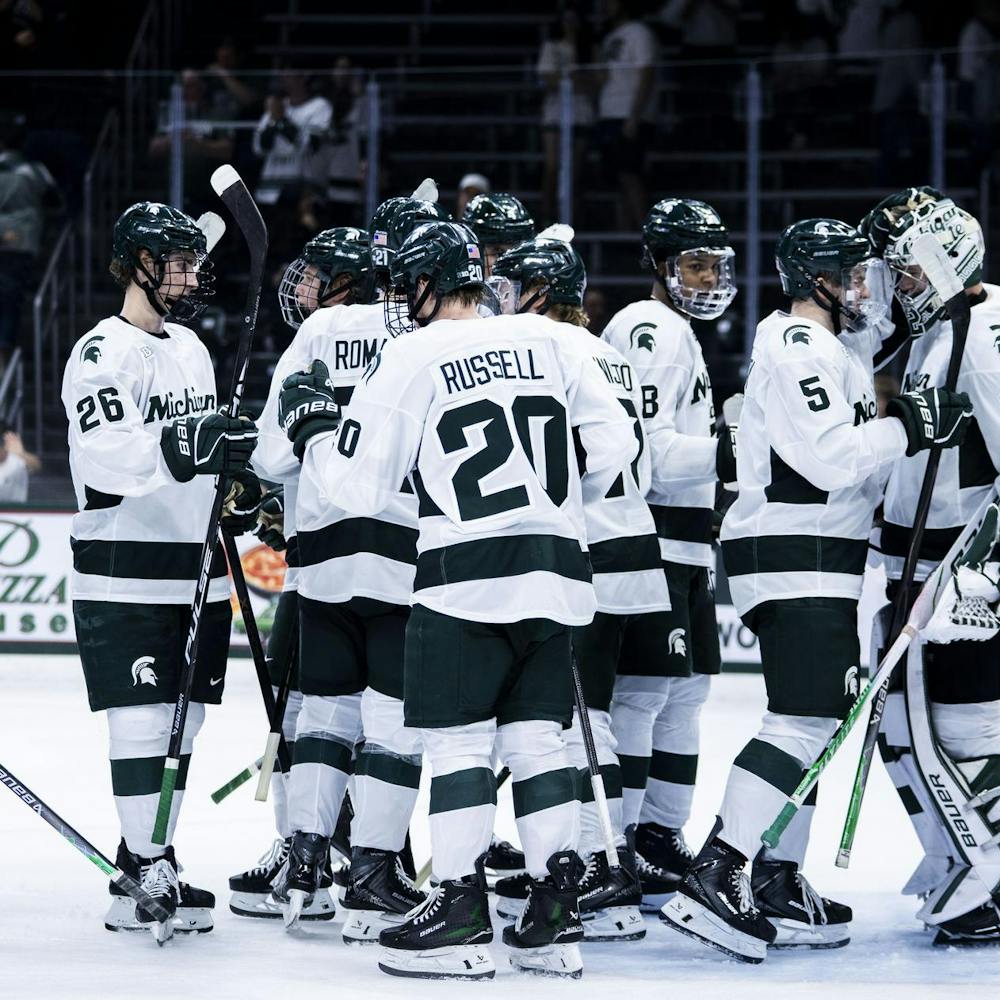Michigan State hockey learned both sides of Big Ten play last weekend, pairing a dominant win with a reminder of how quickly the margin can disappear.
No. 2 MSU hockey resumed conference play last weekend with a split series against Ohio State. On Friday, the Spartans jumped out to a quick 4-0 lead on their way to a 6-2 win, a season high in goals scored. MSU lacked that same grit and execution the following night, falling 2-1 in a performance beneath the team’s standard.
One of the biggest challenges for young hockey players is playing to the standard after a win, head coach Adam Nightingale told the media after the series.
While veteran leadership and talented newcomers have fueled much of MSU’s success this season, Saturday’s loss served as a reminder that growth and response are required in competitive college hockey. Friday’s win showed what the team is capable of when executing at a high level.
MSU moved to 15-5-0 overall and 6-4-0 in Big Ten play following the split. The Spartans return to the road to face No. 3 Wisconsin on Thursday, Jan. 15, and Friday, Jan. 16. Thursday night’s 9 p.m. EST contest will air on Big Ten Network.
Friday, Jan. 9
The Spartans looked dominant in their return to conference play, with freshman forward Anthony Romani opening the scoring Friday night. Freshman forward Porter Martone added another goal seven seconds later, and senior forward Charlie Stramel followed 16 seconds after that to give MSU an early 3-0 lead.
"We executed at a high level," Nightingale told the media after the win. "We scored three goals in maybe 40 seconds, so high execution there."
Martone scored another front-net goal before the first intermission to extend MSU’s lead to 4-0. The winger finished with four points (2-2-4), a career high after missing the previous two games while competing in the IIHF World Junior Championship with Team Canada.
The Spartans took several penalties in the second period, halting their momentum. While MSU has found consistent success this season, second-period lapses have proved costly, including the sweep by Wisconsin earlier this year. Ohio State scored once at even strength and once on the power play, though junior goaltender Trey Augustine held strong in net.

